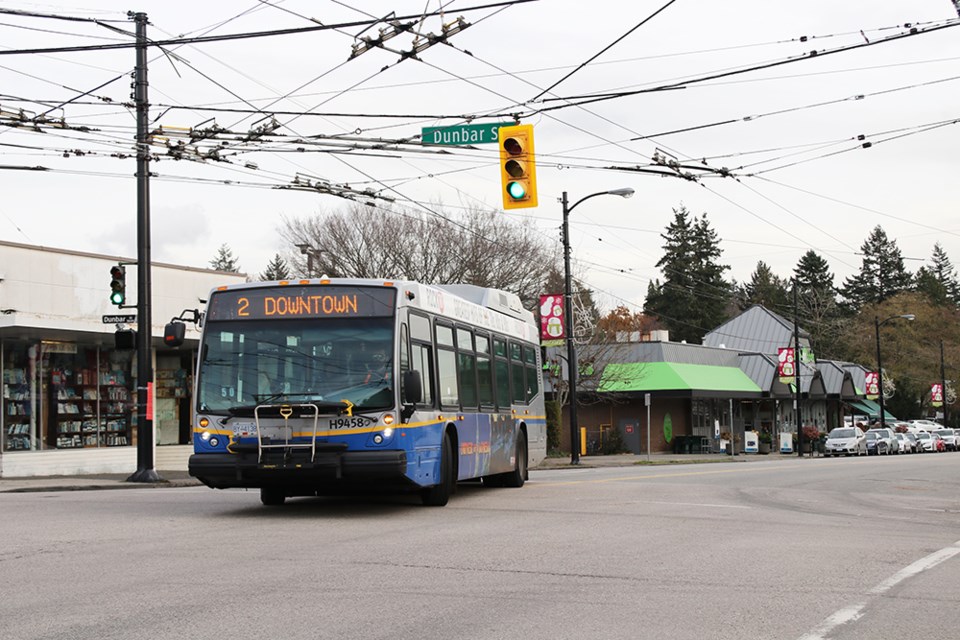Vancouver’s affordability challenges are well documented, so do we really need another comment on how bad things are?
I was wondering that as I mapped out the route of the No. 2 bus, which runs from the lofty towers of Burrard Street’s business district downtown to what I had always envisioned as the stately mansions of the Dunbar neighbourhood.
I write “envisioned” because I’ve never properly explored these southern areas. Of late, I know them mostly from the many reports on evaporating communities: the businesses unable to pay inflated rent or property tax; the character homes demolished to make way for monster houses that sit unoccupied for most of the year.
What intrigued me about this route was whether bus ridership was evaporating, too; whether more “residents” were out of town or simply taking the Lamborghini to Whole Foods instead of the bus. Do these areas still need bus service?
Yes, says my driver, who regularly commandeers the No. 2. The route is generally pretty quiet but ridership ramps up around rush hour. It’s still a commuter line. That said, the annual number of boardings declined by 100,000 between 2012 and 2014, according to TransLink figures, before a slight bump back up in 2015. The No. 2 absorbed sections of the No. 22’s route last year.
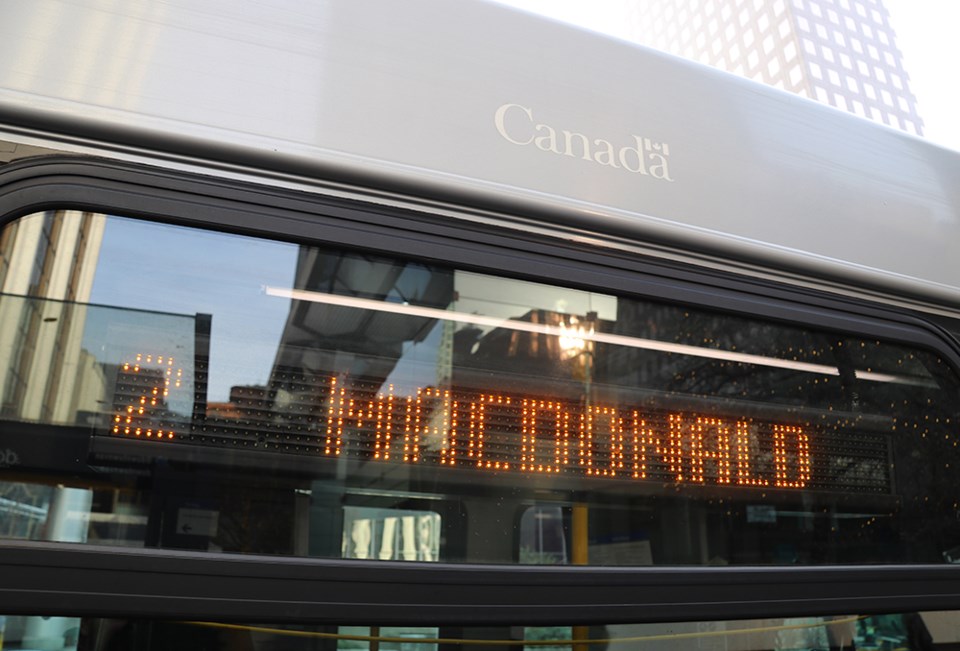
There’s only about a dozen people on board as we scoot south over the Burrard Street Bridge. When we take a right into Kitsilano, I’m suddenly struck by the number of squat, faded 1950s- and 60s-era low rises lining Cornwall Avenue, the main route through Kits Point – in location alone, one of the most desirable areas of town. Even many of the homes with the dazzling view over Kitsilano Beach Park, and the ocean and North Shore beyond, look a little unassuming.
It turns into the theme of the journey. As we roll down MacDonald, what really resonates is how normal the neighbourhoods south of Kitsilano appear. Side street after side street of detached and duplex houses, with the occasional block of shops: grocer, deli, florist, bakery, dry cleaner. It’s the city’s original suburbia.
The houses get bigger and the side streets leafier as the bus dog-legs around King Edward Avenue and heads south on MacKenzie.
Other signs of affluence appear, most notably the ivy-coated walls of Crofton House Senior School after we turn west onto 41st Avenue. Yet the area around the No. 2 terminus at the Dunbar Loop is, again, kind of underwhelming. The loop takes up one corner of the intersection at 41st and Dunbar, the others being occupied by two business models fading from Vancouver – a second-hand book store and a gas station – and a plush yet rather ominous looking Gryphon office/showroom for a future development on this plot, formerly a Scotiabank.
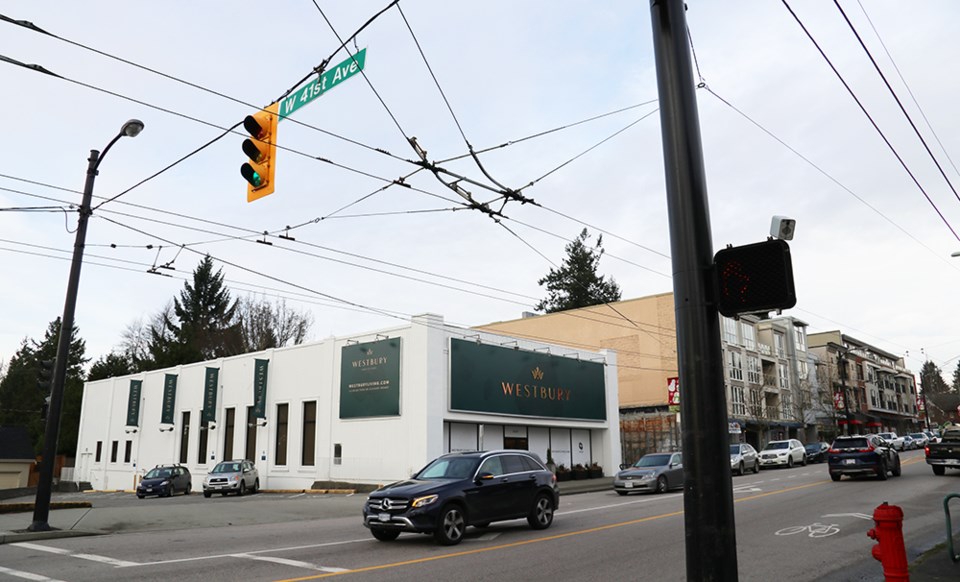
A Save-On-Foods stretches along 41st, while across the road a Chinese grocer remains resolutely open. There’s a Chinese bakery, an exercise studio, a medical centre and a Bosley’s pet store. So far, so normal.
That normality includes signs of community. I walk north up Dunbar and come across a community garden; it looks a bit forlorn, but, to be fair, it’s late November. Across the road there’s another community garden, “brought to you by Wesgroup,” (awww) which will soon make way for the 5505 Dunbar development (ah). (The site was previously home to – you guessed it – a Chevron gas station.)
On this strip there’s also a florist, a takeaway pizza joint and a café called Q Coffee, where I’m greeted by a buzz of local chatter. Older folks, young families and nannies with their charges come and go, trading greetings and small talk. I realize I’ve stumbled into a small community hub. The staff confirm that the customer base of the café, which they say has been on the go for around 15 years, is steady and mostly made up of regulars.
When it comes to community, “We’re a pretty stubborn bunch,” says Colleen McGuinness, president of the Dunbar Residents’ Association. “We work at it.”
She cites a community newsletter delivered three times a year by hand to 5,500 households, and the annual Salmonberry Days festival. There are other intiatives, like a community patrol.
“There are lots of ways we try to bring families together,” McGuinness adds.
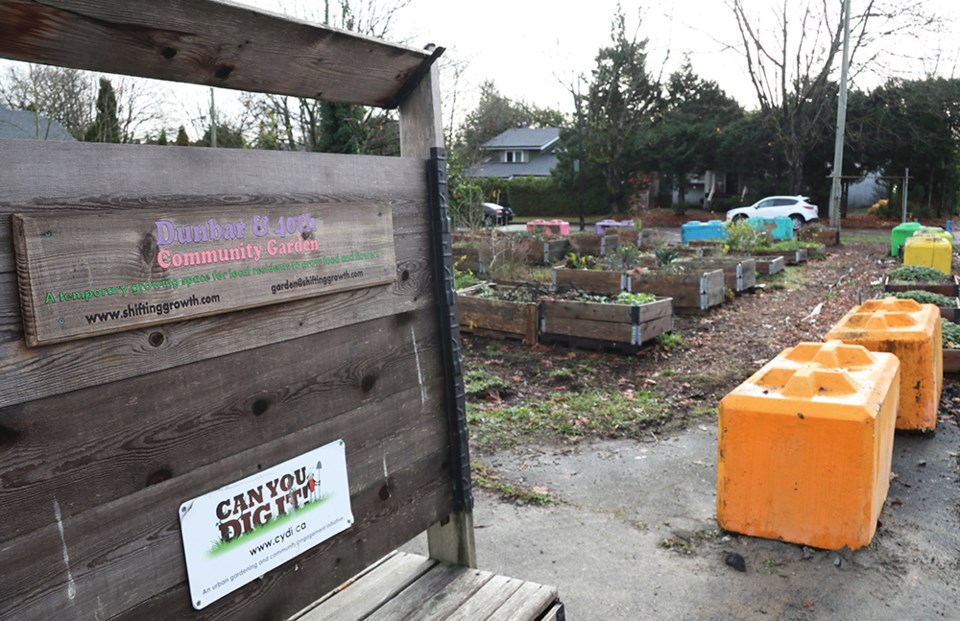
The block containing Q Coffee – formerly the Blaq Sheep – is partly comprised of a new building that McGuinness says is a good example of how developments should be incorporated into Dunbar. It contains several multi-bedroom units (that, admittedly, still cost a million-and-a-half) and is anchored by a brand new H Mart supermarket.
The developer made sure to consult with the DRA, she says, and stuck to the parameters drawn up in the city’s Dunbar Community Vision of 1998, which planned for more multi-unit housing along the area’s arterials.
The city hasn’t committed to rezoning these areas, McGuinness says, leading to new multi-million-dollar single homes on Dunbar Street, where there should be low-rise condos or townhouses.
It’s interesting to hear how the DRA is accepting – even welcoming – of new development in the area.
“We do recognize that density is going to happen, we just want it to be strategic, and we want to make sure that it is designed in such a way as to not be priced out of the reach of the people who live here,” McGuinness says.
Leaving Q Coffee, I cross Dunbar and saunter around one of the residential blocks. The houses, while large, aren’t exactly palatial. The only abnormal things here, of course, are the price tags: A quick search of real estate listings brings up several detached houses, most of them priced upward of $4 million.
Affordability has clearly left Dunbar’s shores, and redevelopment continues apace; but there’s still community here that’s striving to thrive, rallied around groups like the DRA.
Back at the intersection, I try the door to the Gryphon showroom, only to find it locked. I guess this particular piece of the neighbourhood isn’t for normal folks.
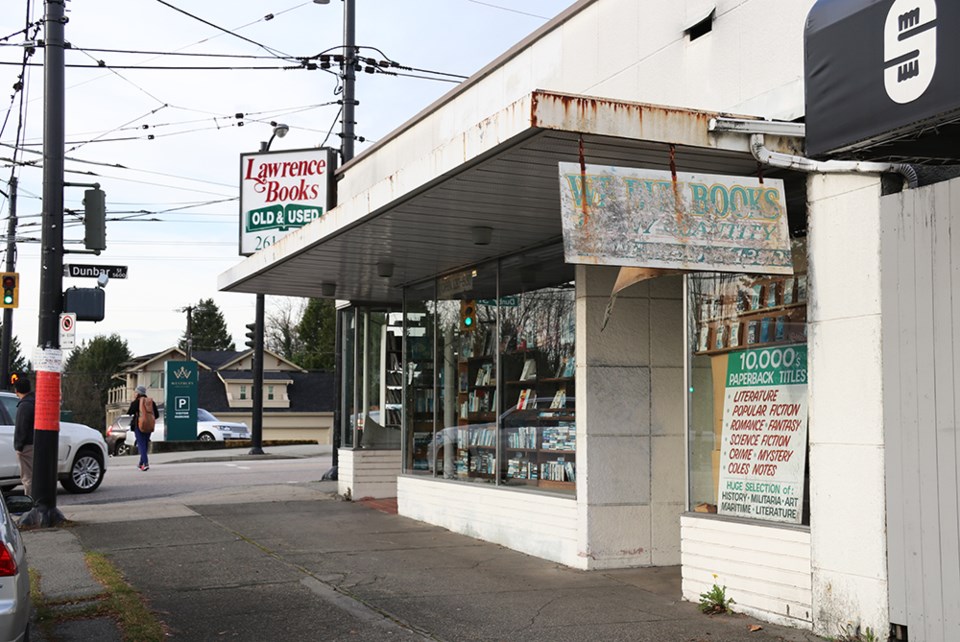
Transit Talk: The No. 2
Terminus stations: Burrard Station-Dunbar Loop
Length of route: 8 km
Estimated route time: 37 minutes
Average speed (2016): 15.8 km/h
Range of real estate listings prices for Dunbar (rew.ca, Nov. 29): $1.298 million - $9.98 million
